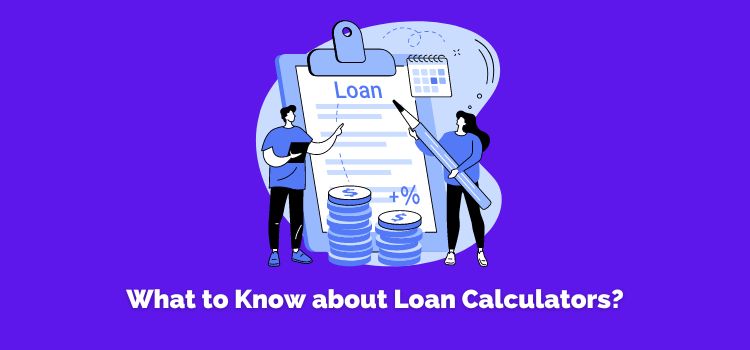Before you sign any dotted line when getting a loan, you should know what the monthly payments will be as well as the total amount that you need to pay to close your account. Lenders may give you an idea about the monthly dues, but they might not tell you about the overall price of the debt that you are taking.

Make wiser choices when you know the interest rates and the amortizations to pay. This way, you can budget the repayments each month and prevent issues down the road. So, what to know about these calculators?
What to Know about Loan Calculators?
Tools on the market can give you accurate estimates of the total cost of the debt you are taking whether it is for a home, car, or a personal loan. Excellent examples are calculators that will require you to key in your current credit score, so you will get more accurate information about whether a specific offer is affordable or not.
Compare offers from different financiers and see what they are really up to. Crunch up the numbers and determine which packages are right for you.
Different financiers may have a lower monthly payment, but when you consider the years of payment, you will end up with an amount that is way too much than the principal you originally borrowed.
Estimations of your monthly payments are an important part of financial planning. Use tools and sheets where you can list your current payables and stick to the budget each month to avoid any surprises. Be clear with your goals with the help of the kalkulator forbrukslån (consumer loan calculator) and start making progress towards them by not missing the due date and not getting any late penalties.
Why do People Get Loans?
Life is hard, and nowadays, it can become worse. People are now getting by with their income, but the rise in the price of commodities is hard to ignore. Others get laid off from their jobs and experience months of unemployment.
So, how do you get by when this happens to you?
One of the options out there is to get a loan either from your loved ones or from traditional banking institutions. However, this is an undertaking that you should not take lightly, and get whatever offer is available at the moment.
You will need to calculate the figures because debt needs to be repaid. Sure, you might be given enough time to repay what you owe, but how do you make sure that you still have enough for food, water, internet, gas, and mortgage for the next few months?
Being realistic and writing a list of your current loans will significantly help you stay afloat until you find work. After all, who wants to rely on their friends and families for money all the time? This is embarrassing, and they have their bills to pay.
Fortunately, you will find relief with the help of online lenders that can give several options that may fit your needs. They can offer an amount that you can pay for about 1 to 5 years, so you will have the chance to start your own business, renovate your home to sell it faster or consolidate all your other debts.
Factors to Look For
You might already be used to getting several loans and offers, but this is your first time accepting one. As there are a lot of financiers available from banks, credit unions, online, and peer-to-peer options, it can be difficult to know which package is right for you.
Some of the things that you need to know about are the following:
1. Know the Type of Loan that You Would Want to Get
Credit cards are the revolving types where you will have to pay only the minimum due each month. If you have the means, you also have the option to pay the entire amount plus the interest, so you will not get charged next month. See more about credit cards when you click here.
These are great options especially if you get the 0% APR introductory rate which will not charge you an extra interest rate for the next 18 months or so. This is excellent for refinancing as well but only those with an excellent credit score may be qualified.
Online lenders will give a lump sum amount that you can use for almost anything. Want a vacation on a sandy beach sipping lemonade? No problem! If you think that you deserve this after years of working hard and it is time to take a rest, then go for personal loans.

2. Unsecured and Secured
Usually, there is no need for collateral when you decide to take out a loan, especially if the borrower has a particularly good credit rating. They are great for personal loans where only your signature is needed to seal the deal.
For secure options, the individual is required to present a car or home as collateral. In the event of a default and you are unable to make payments for the amount owed, the lending institution can confiscate the collateral to mitigate their losses. Since there’s security, you can get better deals with the secured one, and it has a lower APR to make monthly payments easier.
3. About the APR
Principal amounts refer to the amount that you have requested to borrow. If you are already making regular payments, know that you are not only paying for the principal, but you also need to return it with an interest rate as compensation for the lending institution’s services.
Choose a financier that will give you the lowest interest rate as much as possible and calculate the APR. Annual percentage rates will give you the exact figures of the flat rate that you are paying for each year, as well as the rebates and loan tenure. This is a factor that is strictly regulated in various countries, and it will be a good indicator of the overall costs of the debt you are taking.
4. Fixed or Adjustable Interest
There are two types of interest rates that you need to know about: the first one is the fixed rate. It is going to stay the same over the life of the loan, and many people prefer this option because this gives them the ability to anticipate their monthly payments without the added surprise. Read more about the adjustable rates at this link: https://files.consumerfinance.gov/f/201204_CFPB_ARMs-brochure.pdf.
Just imagine if you are getting a variable interest on a consumer debt that is dependent on the movements of the market. Instead of paying around $50 each month on the 15th, you might get an unpleasant surprise when it suddenly rises to $100 because of some unknown regulations and policies made by the state.
Fixed-rate types will be the same regardless of whether you are getting a term of 12 or 36 months. They are not going to increase or decrease, and you will have a more predictable schedule down the road.
5. Tenure
After your approval, you will have a binding contract with the financial institution that lent the funds to you. Over some time, you will have to meet the monthly due until you finish the tenure regardless of whether it is six months or two years.
However, what happens if you suddenly get a windfall in the form of bonuses or inheritance? Fortunately, paying your debts early as possible, and closing the account afterwards will be a big relief to a lot of people. But the problem is that some financiers may charge a prepayment penalty since they wanted to recoup some of the losses. This is why you need to read the fine print before you sign for the loan.
Strict payment schedules are common with banks, and if you are going to break them, there will be consequences. Always select the best ones that are tailor-fit for your lifestyle and financial situation to prevent hassles.
A comparison of two loan offers is possible with the help of a calculator. You might think that one option will only require you to pay $100 each month and the other will be $120. However, if the tenure for the first one is thirty-six while the second is twenty-four, you will find that you are saving a lot on the one with the shorter term.